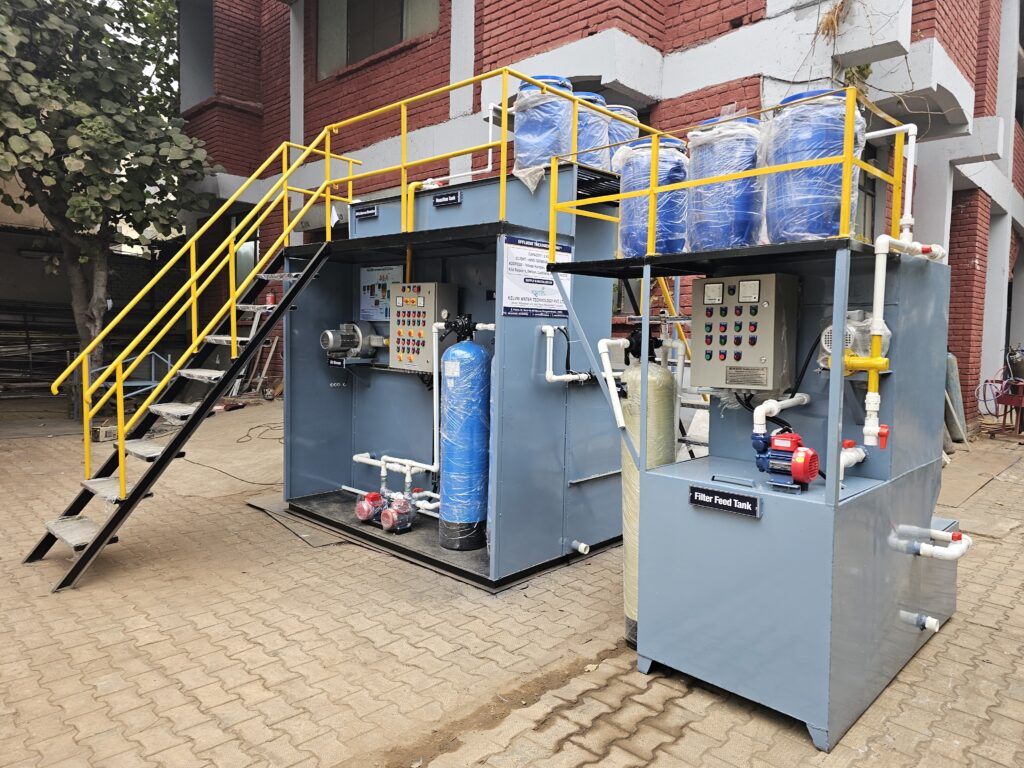What is Effluent Treatment Plant? Explain Its Types, and Advantages.

An Effluent Treatment Plant (ETP) is a crucial component of industrial and municipal infrastructure designed to treat wastewater before it is discharged into the environment. It plays a pivotal role in minimizing the environmental impact of industrial activities by removing pollutants and contaminants from wastewater streams.
Types of Effluent Treatment Plant:
- Physical Treatment: This type of treatment involves the physical removal of suspended solids and large particles from wastewater. Processes like screening, sedimentation, and filtration are commonly used to separate solids from liquid effluents.
- Chemical Treatment: Chemical treatment methods involve the use of chemicals to neutralize, precipitate, or chemically alter pollutants present in wastewater. Coagulation, flocculation, oxidation, and pH adjustment are examples of chemical processes used in ETPs.
- Biological Treatment: Biological treatment utilizes microorganisms such as bacteria and fungi to break down organic matter in wastewater. Processes like activated sludge, aerobic digestion, and anaerobic digestion are employed to degrade pollutants and reduce the organic load of effluents.
- Advanced Treatment: Advanced ETPs employ cutting-edge technologies such as membrane filtration, reverse osmosis, ion exchange, and ultraviolet (UV) disinfection to achieve higher levels of effluent quality. These technologies are particularly effective in treating complex industrial effluents and producing water suitable for reuse.
How an ETP typically operates:
Pre-Treatment Stage:
Screening: The incoming wastewater undergoes screening to remove large objects like sticks, stones, plastics, and other debris. This step prevents damage to downstream equipment and ensures smoother processing.
Primary Treatment:
Sedimentation: In this stage, the wastewater is allow to settle in a sedimentation tank. Gravity causes heavier particles and solids to settle at the bottom, forming sludge, while lighter materials float to the surface as scum. The clarified water in the middle is then separate for further treatment.
Secondary Treatment:
Biological Treatment: The clarified water from the primary treatment is transferred to a biological reactor or tank, where it meets microorganisms like bacteria and fungi. These organisms break down organic pollutants present in the water, converting them into harmless substances like carbon dioxide and water. Common biological processes include activated sludge, trickling filters, and sequencing batch reactors (SBRs).
Tertiary Treatment (Optional):
Advanced Filtration: ETPs incorporate advanced filtration methods, such as membrane filtration or sand filtration to further purify the treated water.
Chemical Treatment: Chemical processes like coagulation, flocculation, & disinfection are used in the tertiary stage to remove pollutants, improve water clarity.
Disinfection:
Chlorination or UV Treatment: After the primary, secondary, and tertiary treatments, the water undergoes disinfection to kill any remaining harmful microorganisms. This is typically achieved through chlorination (using chlorine-based chemicals) or ultraviolet (UV) irradiation, which disrupts the DNA of pathogens, rendering them inactive.
Sludge Management:
Sludge Dewatering: Throughout the treatment process, solid waste and sludge accumulate, especially from the sedimentation and biological treatment stages. This sludge is often dewater using methods like centrifugation or drying beds to reduce moisture content and facilitate proper disposal.
Effluent Monitoring:
Quality Analysis: Regular monitoring and analysis of the treated effluent are essential to ensure that it meets regulatory standards and is safe for discharge into receiving water bodies or for reuse purposes. Parameters such as pH, biochemical oxygen demand (BOD), chemical oxygen demand (COD), suspend solids, and microbial counts are commonly measure to assess water quality.
Effluent Discharge or Reuse:
Discharge: If the treated effluent meets the required quality standards, it can be safely discharge into surface water bodies.
Reuse: Alternatively, depending on the ETP’s design and objectives, the treated water may undergo further treatment for reuse purposes, such as irrigation, industrial processes, or non-potable applications like cooling water for equipment.
Advantages of Effluent Treatment Plant:
- Environmental Protection: ETPs play a vital role in safeguarding ecosystems & public health by reducing pollution pollution discharged into water bodies. They help prevent water contamination, habitat degradation, and adverse effects on aquatic life.
- Compliance with Regulations: ETPs ensure that industries adhere to environmental regulations and standards regarding wastewater discharge. By treating effluents to permissible levels, companies avoid legal penalties and contribute to sustainable resource management.
- Resource Recovery: Some ETPs incorporate processes for recovering valuable resources from wastewater, such as energy, nutrients, and reusable water. This promotes resource conservation, reduces raw material consumption, and enhances overall efficiency.
- Community Health: By treating wastewater effectively, ETPs minimize the risk of waterborne diseases and contamination of drinking water sources. This is crucial for protecting public health and improving the quality of life in surrounding communities.
- Corporate Responsibility: Investing in ETPs demonstrates corporate responsibility and commitment to environmental stewardship. Companies that prioritize sustainable practices and pollution prevention enhance their reputation, build trust with stakeholders, and contribute positively to society.
- Cost Savings: While establishing and operating ETPs requires initial investments, they can lead to long-term cost savings by reducing water consumption, minimizing waste disposal costs, and avoiding potential fines or litigation resulting from non-compliance.
In Conclusion
Effluent Treatment Plants are indispensable in mitigating the environmental impact of wastewater discharge from industrial and municipal sources. By employing various treatment methods, ETPs effectively remove pollutants, protect natural resources, ensure regulatory compliance, and promote sustainable development. Their multifaceted benefits encompass environmental protection, public health improvement, resource recovery, and corporate responsibility, making them integral to modern wastewater management practices.